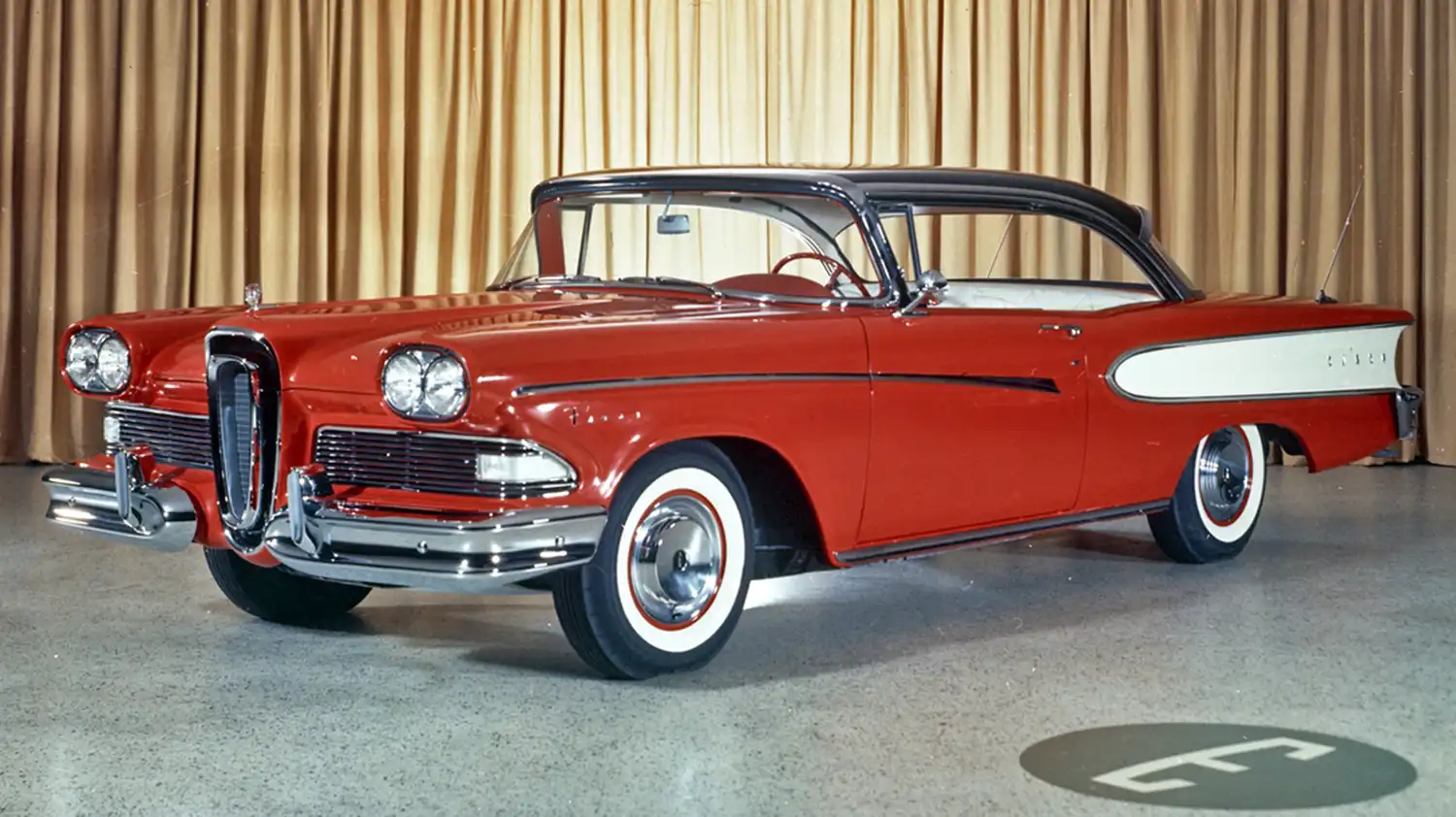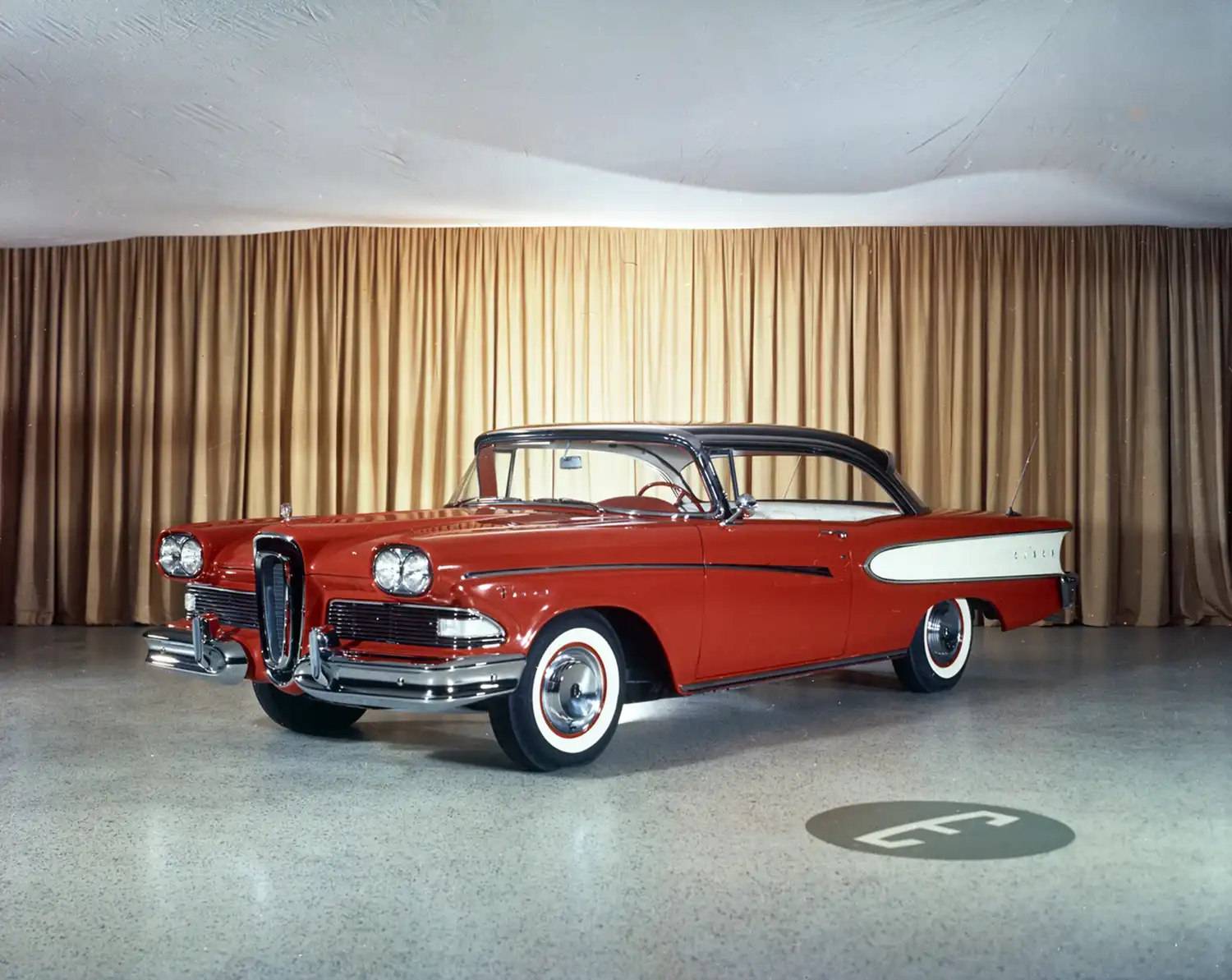
The 1958 Edsel Pacer Hardtop History holds a distinct and often debated position in the annals of automotive design. This particular model, part of Ford’s ambitious new division, aimed to carve out a unique identity. Despite significant anticipation, the Edsel Pacer faced considerable challenges. Its distinctive styling and innovative features garnered both attention and criticism. Today, however, the 1958 Edsel Pacer Hardtop is recognized as an auto icon. It symbolizes a bold period of American automotive experimentation. Its narrative continues to fascinate car enthusiasts.
The Ambitious Edsel Experiment
Ford Motor Company launched the Edsel division with grand aspirations. This extensive project aimed to position the Edsel within the competitive mid-range market. The Pacer model was a key offering in this lineup. It positioned itself as a step below the top-tier Corsair. Ford poured vast resources into market research and development. The company sought to create a brand that resonated deeply with consumers. This ambitious undertaking, though ultimately unsuccessful, left an indelible mark. It represents a pivotal moment in corporate strategy.
Unmistakable Edsel Styling
The 1958 Edsel Pacer Hardtop truly sported unmistakable styling. Its most prominent feature was the polarizing vertical grille. This unique design element aimed to provide instant brand recognition. It created a powerful visual statement. The sleek hardtop body style contributed to its appeal. This pillarless design offered an open, airy feeling. It appealed to consumers seeking modern aesthetics. While the styling drew mixed reactions, it certainly was never ignored. The Pacer embodied the daring design language of the entire Edsel line.
Power and Innovation Under the Hood
Under the hood, the 1958 Edsel Pacer delivered notable power. It typically featured the robust E-400 V8 engine. This powerful 361 cubic inch (5.9L) engine provided ample horsepower. It ensured smooth and responsive acceleration. A significant innovation was the Teletouch automatic transmission. This system used push-buttons integrated into the steering wheel. This unique approach aimed to enhance driving convenience. It represented a forward-thinking design choice. The Pacer’s engineering reflected contemporary advancements. It sought to provide drivers with a refined experience.

Interior Details and Comfort
The interior of the 1958 Edsel Pacer Hardtop offered a blend of practicality and comfort. Its cabin design reflected the era’s automotive trends. Bench seating provided generous space for passengers. The Pacer featured specific upholstery patterns. These distinguished it within the Edsel lineup. Standard amenities contributed to passenger convenience. These included a functional dashboard layout. The hardtop design ensured a spacious feel. This allowed for an enjoyable ride. It was a well-appointed interior for its segment.
The Pacer’s Place in History
The Edsel Pacer, as part of the broader Edsel line, faced market challenges. Over-hyped expectations contributed to its struggles. Its unconventional styling proved to be a divisive factor. Early production issues also impacted public perception. The brand’s ambitious launch ultimately faltered. Sales figures remained disappointingly low. The Edsel quickly became synonymous with commercial failure. The Pacer shared in this challenging narrative. It marked a period of significant learning for Ford.
An Enduring Automotive Icon
Despite its commercial struggles, the 1958 Edsel Pacer Hardtop has blossomed into an enduring automotive icon. It represents a fascinating case study in marketing and product development. Its distinctiveness, once a point of contention, is now celebrated. Collectors value its unique place in history. The Pacer symbolizes a moment of bold risk-taking. It embodies the spirit of innovation in mid-century America. Its story continues to resonate deeply.
Summary
The 1958 Edsel Pacer Hardtop is a significant automotive icon, notable for its distinctive vertical grille and sleek hardtop design. As part of Ford’s ambitious Edsel division, it featured a powerful E-400 V8 engine and the innovative Teletouch push-button automatic transmission. Despite its initial market challenges and association with the Edsel’s commercial failure, the Pacer’s unique styling and historical context ensure its lasting legacy as a memorable classic.
Disclaimer: Information presented is for general informational purposes only and is based on historical automotive data. Specific details may vary.
Source: Ford Heritage Vault
AI Assistance: Gemini
